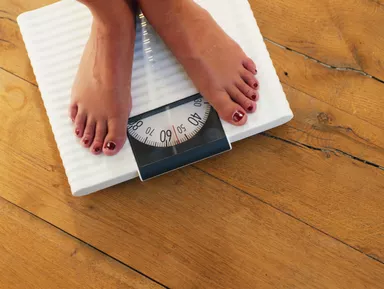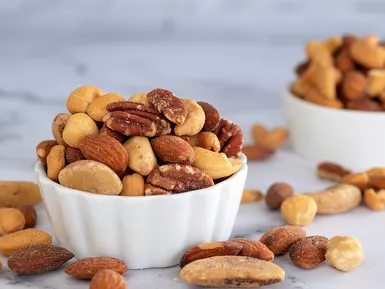How Long to Lose 50 Pounds on a 1,200-Calorie Diet? Science-Based Timelines

How Long to Lose 50 Pounds on a 1,200-Calorie Diet? Science-Based Timelines
If you're considering a 1,200-calorie diet to lose 50 pounds, you're likely eager for answers—but speed shouldn't overshadow safety. Let's break down the science, realistic timelines, and critical factors that determine your journey.
The Math Behind Weight Loss: Calorie Deficits 101
Weight loss boils down to energy balance: you must burn more calories than you consume. One pound of body fat equals approximately 3,500 calories (NIH, 2023). To lose 50 pounds, you need a total deficit of 175,000 calories.
A 1,200-calorie diet's effectiveness depends on your basal metabolic rate (BMR)—the calories your body burns at rest. For a sedentary 30-year-old woman weighing 200 lbs, BMR is roughly 1,580 calories/day (Mifflin-St Jeor equation). A 1,200-calorie intake creates a 380-calorie daily deficit. Without exercise, this would take ~460 days to reach 50 lbs (175,000 ÷ 380). But this is a simplification—metabolism adapts as you lose weight.
The Metabolic Adaptation Trap: Why Progress Slows
As you shed pounds, your BMR drops because a smaller body requires less energy. A 150-lb version of the same woman might have a BMR of 1,400 calories/day. Suddenly, her 1,200-calorie diet only creates a 200-calorie deficit—slowing progress to ~875 days for 50 lbs.
The NIH warns: Losing more than 1-2 lbs/week long-term is unsustainable (NIH, 2023). Rapid deficits often lead to muscle loss, hormonal imbalances, and rebound weight gain. A 1,200-calorie diet may be too low for some—especially active individuals or those with larger frames.
Is a 1,200-Calorie Diet Safe for You?
The FDA considers 1,200 calories/day a "very low-calorie diet (VLCD)"—typically only recommended medically for short-term use (FDA, 2022). Risks include:
- Nutrient deficiencies (e.g., iron, vitamin D, calcium)
- Fatigue and impaired cognitive function
- Gallstone formation (common with rapid weight loss)
Key caveat: Women weighing under 160 lbs or men may struggle to meet nutrient needs at 1,200 calories. Always consult a registered dietitian before starting a VLCD.
Optimizing Your 1,200-Calorie Plan: 3 Science-Backed Adjustments
- Add Strength Training (ACE, 2022): Lifting weights preserves muscle mass, which boosts BMR. Aim for 2-3 weekly sessions targeting major muscle groups—this alone can offset 10-15% of metabolic slowdown.
- Cycle Calories: Every 4-6 weeks, increase intake by 200-300 calories for 1-2 days. This "refeed" stabilizes leptin (the satiety hormone) and prevents metabolic shutdown.
- Track Non-Scale Wins: Measure waist circumference, energy levels, and clothing fit. These metrics better reflect fat loss than the scale, which often fluctuates due to water weight.
Realistic Timeline: What to Expect
For most healthy adults, a sustainable rate is 0.5-1.5 lbs/week. At 1 lb/week, 50 lbs would take ~50 weeks (12 months). If you:
- Combine 1,200 calories with 3x/week cardio (burning ~200 calories/session)
- Prioritize protein (1g per pound of current body weight)
- Sleep 7-9 hours nightly (poor sleep reduces fat oxidation by 55%—Harvard Health, 2021)
You could safely hit 50 lbs in 10-14 months.
Final Takeaway: Slow Progress = Lasting Results
A 1,200-calorie diet can help lose 50 pounds—but only if paired with muscle preservation, nutrient density, and patience. Skip the "quick fix" mindset: studies show those who lose weight gradually are 3x more likely to keep it off (JAMA, 2020).
Your next step: Schedule a consultation with a dietitian to personalize your calorie target (many need 1,400-1,500 calories for sustainable loss). Then, add 2 strength sessions this week—your metabolism (and future self) will thank you!

5 Transformative Weight-Loss Resolutions for Success

Workout Routines & Beyond: Science-Based Weight Loss

Vitamin E and Weight Loss: Unveiling the Truth

Effective Strategies to Lose Midriff Fat for Women

8 Non-Scale Victories in Your Weight-Loss Journey

Unveiling the Ornish Diet: A Path to Sustainable Weight Loss

The Power of Social Support in Weight Loss

Personalized Weight Loss: 4 Strategies for Success

Long - Term Weight Loss: Maintaining Healthy Habits

